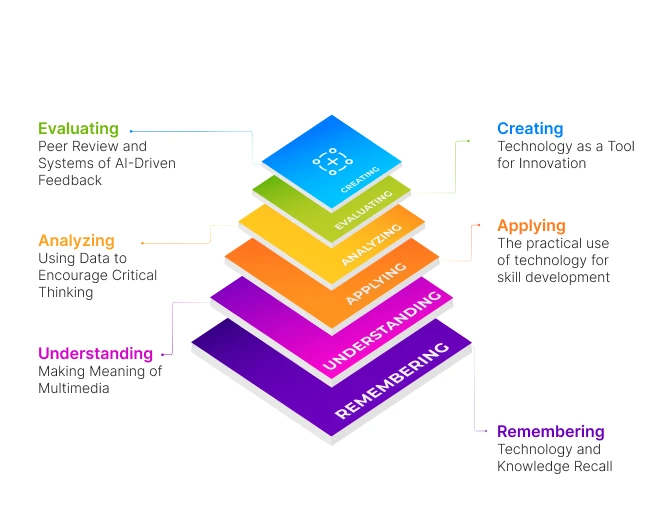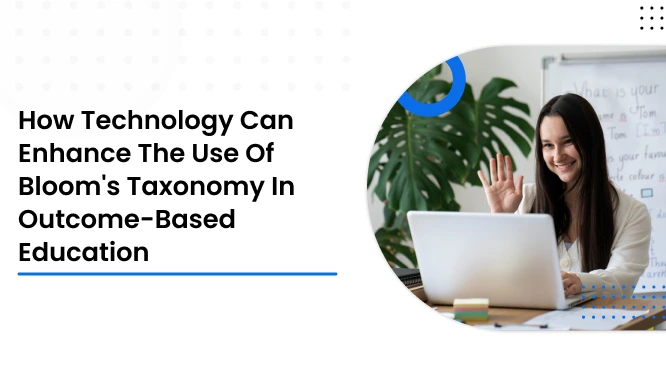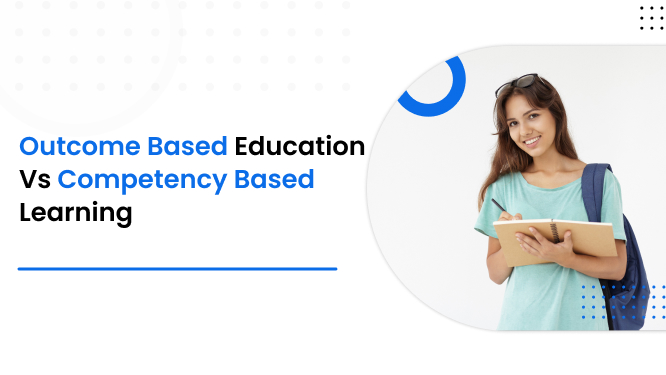How technology can enhance the use of Bloom's Taxonomy in outcome-based education
Nowadays, technology integration within traditional frameworks in education is a burning need and a guarantee that a student will be successful. One such widely used framework within the entire instructional design—in fact, within long periods of time now—is Bloom's Taxonomy.
Indeed, when combined with outcome-based education, or OBE, it really becomes much stronger. Just as technology has evolved, so too have ways that Bloom's Taxonomy can be used to enhance teaching, learning, and assessment.
Table of contents
- Understanding Bloom's Taxonomy
- Outcome-Based Education and Its Value
- Technology in Modern Education: A Review of Roles
Understanding Bloom's Taxonomy
Bloom's Taxonomy is a hierarchical framework designed by Benjamin Bloom in 1956, which categorized learning objectives into six cognitive levels: "Remembering," "Understanding," "Applying," "Analyzing," "Evaluating," and "Creating." Levels assist educators in devising both lessons and assessments toward getting students into deeper learning as well as critical thinking.
Fundamentally, Bloom's Taxonomy guides the process by which the student progresses from lower-level knowledge recall to higher-order critical analysis and creative thinking. It is a systematic approach toward the preparation of student learning outcomes and perfectly suffices the paradigm requirements of outcome-based education.
CO-PO Mapping: Aligning Outcomes with Learning Activities
Outcome-Based Education and Its Value
Outcome-based education (OBE) focuses on achieving specific outcomes in learning rather than merely completing a curriculum. OBE is student-centered, meaning that educational activities are designed to ensure students meet predetermined learning outcomes. This shift from traditional teacher-centered methods places more responsibility on students to achieve results through their learning activities.
By integrating Bloom’s Taxonomy into OBE, educators can design courses and assessments that target specific cognitive outcomes, ensuring that students not only understand content but also develop the critical thinking skills necessary for real-world applications.

Technology in Modern Education: A Review of Roles
Technology has also reshaped how Bloom's Taxonomy can be applied to fit the requirements of outcome-based education. Today's classroom encourages the application of such advanced tools as Learning Management Systems, virtual labs, AI-driven assessments, and collaborative platforms that inject dynamism and fun into learning. Technology enables educators to clearly map their teaching strategies in terms of Bloom's Taxonomy and evaluate student achievement of learning outcomes.
Remembering: Technology and Knowledge Recall
At the base of Bloom's Taxonomy is the Remembering stage wherein students should recall basic facts, terms, and concepts. Traditionally this is done through rote-learning methods such as flashcards or repetition by reading. This process is greatly enhanced with technology. Learning apps and interactive apps, really help in making rote learning a bit enjoyable for students. To put it more precisely, learners would be constantly motivated through flashcards, quizzes, and trivia-based games, from which retaining information in a much more interactive and hilarious style might be possible. For outcome-based education, remembering has to be efficiently established to proceed with higher-order thinking skills.
Understanding: Making Meaning of Multimedia
This is the Understanding phase, where students are supposed to learn what is meant by the learning material. Technology allows educators to deliver information in diverse modes to suit different ways of learning. Complicated concepts can be easily shown and taught through illustrative ways like interactive simulations, video lectures, and infographics. This kind of multimodal learning thus helps students to understand the subject better, which is important for achieving the desired outcomes. Secondly, teachers incorporate several rich-media resources in lessons to enhance and reinforce the learning process through both visual and auditory paths.
Applying: The practical use of technology for skill development
That is the Applying phase of Bloom's Taxonomy: the point at which students apply concepts learned in real-world or practical situations. Here's where technology shines in the classroom, in that it enables experiential learning. Virtual labs and simulation software offer the possibility for experience in practice to students in topics like science, engineering, and healthcare. For instance, medical students will be capable of rehearsing surgery in a virtual environment before ever having gone into an operating room, thus being certain about forming the skills and confidence they will need. This perfectly links with OBE whereby the application of knowledge plays a role in achieving certain learning outcomes.
Analyzing: Using Data to Encourage Critical Thinking
The level of Bloom's Taxonomy known as Analyzing centers on breaking information down into components, understanding relationships, and comparing data. Technology will be able to promote these skills when students access data-driven learning. Data analysis applications, including Excel and Google Sheets, allow students to manipulate and interpret large sets of data in order to discover any patterns and relationships. Second, AI-based tools give instantaneous feedback that helps learners apply learning to interpret complex datasets for decision-making purposes. Online discussion forums and collaboration tools also allow students to put different viewpoints regarding the same issue in perspective for critical thinking and analysis. These activities support outcome-based education through the development of critical analytical skills important in solving challenging real-life problems.
Evaluating: Peer Review and Systems of AI-Driven Feedback
In the Evaluating stage, students make judgments about the value of information or work based on the criteria and standards. Increased access to technology allows students and educators to use digital tools that will facilitate this process in the evaluation stage. Similarly, the peer review platforms allow students to assess others' works against the rubrics aligned with Bloom's Taxonomy. They may be designed to provide formatively structured feedback that does not serve only to improve student work but also to develop their critical evaluation skills.
Creating: Technology as a Tool for Innovation
Finally, at the top level of Bloom's Taxonomy is Creating, which includes making something new and developing ideas by synthesizing information from diverse sources. This is where technology really opens a whole new world for creativity, innovation, and even the publishing of this work to an international audience. Other digital tools like blogging, podcasting, and video creation tools give students the platform and opportunity to explain their innovations in all formats related to the hardest concepts. Many Technologies offer students a medium through which they can present, and create infographics, or videos for creative synthesis. More than this, many collaborative platforms enhance this creative process by allowing students to work together simultaneously, brainstorm, and develop group projects. This constitutes the very pinnacle in terms of learning according to Bloom's Taxonomy, and for this reason, it is in good accord with outcome-based education by way of promoting creativity and innovativeness in problem-solving.
Conclusion
The technology can therefore revolutionize how educators use Bloom's Taxonomy to design enhanced learning outcomes in outcome-based education. In essence, learners receive digital support from recall up to creation at all levels of cognition per Bloom's Taxonomy. Whereas education is an ongoing evolution, incorporating technology into Bloom's Taxonomy becomes necessary if the imperatives of OBE are to be realized such that students do not end up only knowledgeable but also able to apply and create new knowledge for use in real-life settings.




